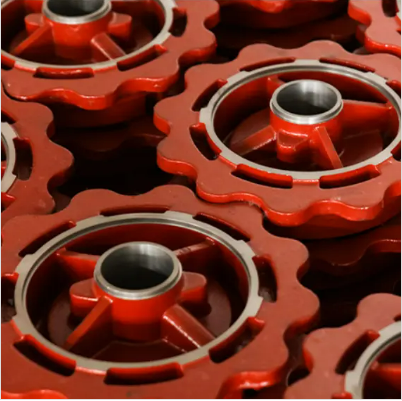Mobile:+86-311-808-126-83
Email:info@ydcastings.com
plumbing end cap
Understanding Plumbing End Caps A Comprehensive Guide
In the world of plumbing, every small component plays a crucial role in ensuring a seamless and functional system. One such vital component is the plumbing end cap. Whether you are a seasoned plumber or a homeowner tackling a DIY project, understanding the purpose and applications of end caps can significantly enhance your plumbing knowledge.
What is a Plumbing End Cap?
A plumbing end cap is a fitting used to seal the end of a pipe. It acts as a closure, preventing fluid from escaping or entering a pipe at the designated endpoint. Typically made from materials such as PVC, metal, or copper, end caps come in various sizes and types to suit different piping systems.
Functions of Plumbing End Caps
The primary function of an end cap is to create a secure and leak-proof seal at the terminal point of a pipe. This is particularly essential in water supply systems, drainage systems, and gas lines where preventing leaks is crucial for safety and efficiency.
In addition to sealing, plumbing end caps are also used for
1. Branching Out When modifying a plumbing system, an end cap allows the plumber to close off an unused branch of piping, ensuring that the flow is correctly directed through the intended pathways.
2. Temporary Shutdown In maintenance situations, end caps can temporarily seal off a section of piping without needing to remove or replace additional fittings.
3. Testing Pressure End caps are often used in testing scenarios where a specific section of piping needs to be pressurized to check for leaks or weaknesses.
Types of Plumbing End Caps
Plumbing end caps come in several types, each designed for specific applications
plumbing end cap

1. PVC End Caps Made from polyvinyl chloride, these caps are typically used in residential plumbing for water supply and drainage systems. They are lightweight, resistant to corrosion, and easy to work with.
2. Metal End Caps Comprising materials such as brass or copper, metal end caps are often employed in gas lines and high-pressure applications. They provide a sturdy closure and are known for their durability.
3. Compression End Caps These caps are used with compression fittings, providing a tight seal without requiring soldering or welding. This feature makes them a favorite for quick repairs and adjustments.
Installation Process
Installing a plumbing end cap is a straightforward process, but it does require attention to detail to ensure a secure seal. Here are the basic steps
1. Choose the Right Size The first step is to select the appropriate end cap size that matches the diameter of your pipe.
2. Cut the Pipe Use a pipe cutter to ensure a clean cut at the end of the pipe where the cap will be installed.
3. Clean the Surface Remove any debris, rust, or old adhesive from the pipe’s end for the best seal.
4. Attach the End Cap Depending on the type of cap and pipe, you may need to use glue, solder, or a simple push-fit to secure the end cap. Make sure to follow the manufacturer's instructions for the best results.
5. Test for Leaks Once the end cap is in place, turn on the water to check for leaks. If everything is tight, you’re good to go!
Conclusion
Plumbing end caps, though often overlooked, are essential components that contribute to the overall efficiency and safety of plumbing systems. By understanding their function, types, and installation process, anyone can ensure a reliable plumbing setup. Whether you are making simple repairs or undertaking major plumbing projects, don’t underestimate the importance of a quality end cap in your toolbox.
-
Why Should You Invest in Superior Pump Castings for Your Equipment?NewsJun.09,2025
-
Unlock Performance Potential with Stainless Impellers and Aluminum End CapsNewsJun.09,2025
-
Revolutionize Your Machinery with Superior Cast Iron and Aluminum ComponentsNewsJun.09,2025
-
Revolutionize Fluid Dynamics with Premium Pump ComponentsNewsJun.09,2025
-
Optimizing Industrial Systems with Essential Valve ComponentsNewsJun.09,2025
-
Elevate Grid Efficiency with High-Precision Power CastingsNewsJun.09,2025











